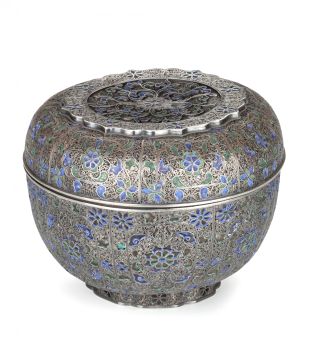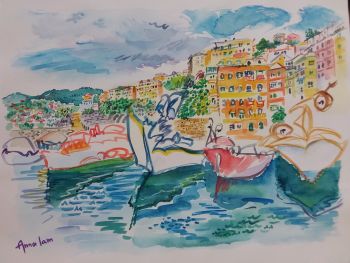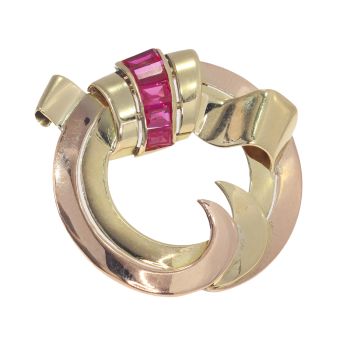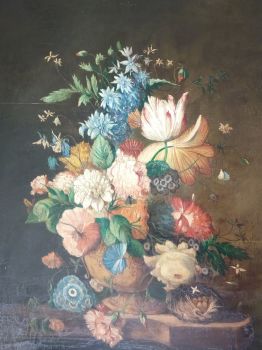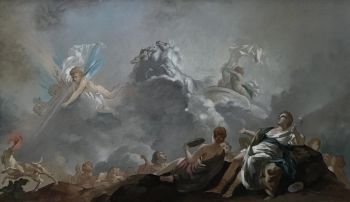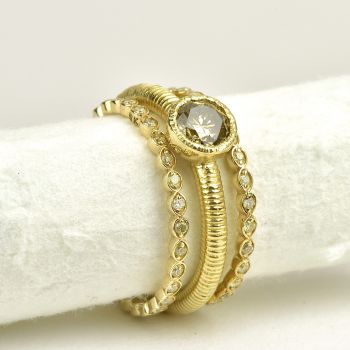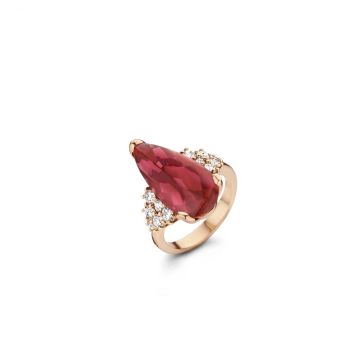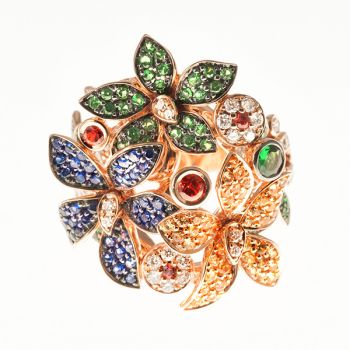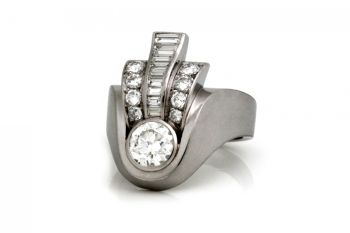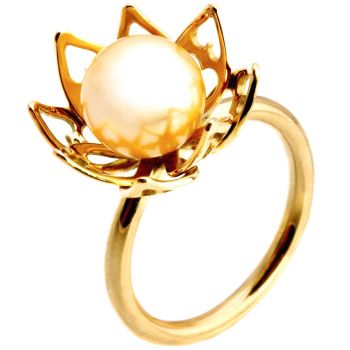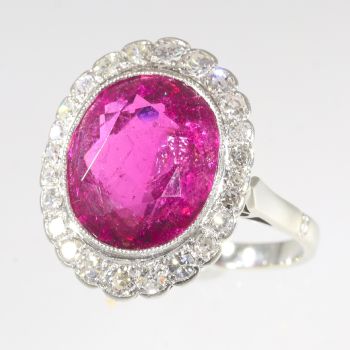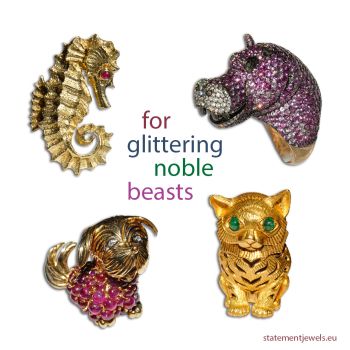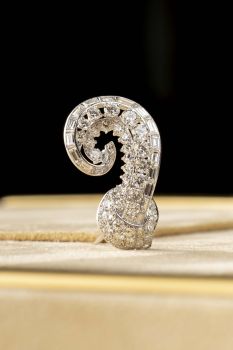Anel barroco / rococó antigo de meados do século 18 com diamantes lapidados em uma mina antiga 1750
Artista Desconocido
Oro amarilloDiamanteOroPiedra preciosa
€ 9.250
Adin Fine Antique Jewellery
- Sobre la obra de arte
Antique jewelry object group: ring
Condition: excellent condition
- (more info on our condition scale)
Country of origin: unknown
Style: Rococo - Rococo (less commonly roccoco) also referred to as "Late Baroque" is an 18th century style which developed as Baroque artists gave up their symmetry and became increasingly more ornate, florid, and playful. Rococo rooms were designed as totalworks of art with elegant and ornate furniture, small sculptures, ornamental mirrors, and tapestry complementing architecture, reliefs, and wall paintings. It was largely supplanted by the Neoclassic style. In 1835 the Dictionary of the French Academystated that the word Rococo "usually covers the kind of ornament, style and design associated with Louis XV's reign and the beginning of that of Louis XVI". It includes therefore, all types of art produced around the middle of the 18th century inFrance.
- See also: Rococoor more info on styles
Style specifics: Rococo is a style of decoration that followed, c.1730, the baroque style in France (where it was also called rocaille), the principal features of which are asymmetry of ornament and a repertoire consisting to a considerable extent of rockwork, shells,flowers, foliage, and scrollwork. It was developed in France under Louis XV, 1715-74, and spread to Italy, Germany, and Austria and to a lesser extent to England.
Period: ca. 1750
- (events & facts of this era, poetry of this era, fashion of this era)
Material: 18K yellow gold
- (more info on precious metals)
Technique: Enamelling is an old and widely-adopted technology. The ancient Egyptians applied enamels to pottery and stone objects. The ancient Greeks, Celts, Russians, and Chinese also used enameling processes on metal objects. Enamel is the colorful result offusing powdered glass to a substrate by firing, usually between 750 and 850 degrees Celsius. The powder melts and flows and hardens to a smooth, durable vitreous coating on metal, glass or ceramic. According to some sources, the word enamel comes fromthe High German word smelzan (to smelt) via the Old French esmail. Used as a noun, "an enamel" is a usually small decorative object, coated with enamel coating, such as a champlevé or a cloisonné (different techniques).
Diamond(s): 15 old brilliant cut diamondswith an estimated weight of ± 1.50ct. (colour and clarity: G/K, vs/i).
- All diamond weights, color grades and clarity are approximate since the stones were not removed from their mounts to preserve the integrity of the setting.
Total diamond weight: approx. 1.50 crt.
Birthstones: Diamond is the birthstone (or month stone) for April.
- (more info on birthstones)
Hallmarks: No trace.
- (more info on hallmarks)
Dimensions: top of ring 1,90 cm (0,75 inch) x 1,20 cm (0,47 inch)
Weight: 4,80 gram (3,09 dwt)
Ring size Continental: 51 & 16¼ , Size US 5½ , Size UK: K½
Resizing: Free resizing (only for extreme resizing we have to charge).
- (more info on ring sizes)
Reference Nº: 16340-0042
Copyright photography: Adin, fine antique jewelry
- Sobre el artista
Puede suceder que un artista o creador sea desconocido.
Algunas obras no deben determinarse por quién está hecho o por (un grupo de) artesanos. Algunos ejemplos son estatuas de la Antigüedad, muebles, espejos o firmas que no son claras o legibles, pero también algunas obras no están firmadas en absoluto.
También puedes encontrar la siguiente descripción:
•"Atribuido a …." En su opinión, probablemente una obra del artista, al menos en parte.
•“Estudio de….” o “Taller de” En su opinión, una obra ejecutada en el estudio o taller del artista, posiblemente bajo su supervisión
•“Círculo de…” En su opinión, una obra del período del artista que muestra su influencia, estrechamente asociado con el artista pero no necesariamente su alumno.
•"Estilo de …." o “Seguidor de…”. En su opinión, una obra ejecutada al estilo del artista pero no necesariamente por un alumno; puede ser contemporáneo o casi contemporáneo
•"Manera de …." En su opinión una obra al estilo del artista pero de fecha posterior
•"Después …." En su opinión, una copia (de cualquier fecha) de una obra del artista
•“Firmado…”, “Fechado…” o “Inscrito” En su opinión, la obra ha sido firmada/fechada/inscrita por el artista. La adición de un signo de interrogación indica un elemento de duda.
•“Con firma…”, “Con fecha…”, “Con inscripción…” o “Lleva firma/fecha/inscripción” en su opinión la firma/fecha/inscripción ha sido añadida por alguien que no es el artista
¿Está interesado en comprar esta obra de arte?
Artwork details
Related artworks
- 1 - 4 / 12
Eduard Charlemont
‘Allegories of Africa and America’1872
Precio a consultarZebregs & Röell - Fine Art - Antiques
Artista Desconocido
A Dutch colonial Indonesian betel box with gold mounts1750 - 1800
Precio a consultarZebregs & Röell - Fine Art - Antiques
Artista Desconocido
A pair of angels Antwerp, 17th century, Carrara marble17th century
Precio a consultarFrederik Muller
Artista Desconocido
Vaso Cristallo façon de Venise1600 - 1650
Precio a consultarPeter Korf de Gidts - Antiquairs
 curada por
curada porDanny Bree
Artista Desconocido
A superb Indonesian royal gem-set gold overlaid silver betel box19th century
Precio a consultarZebregs & Röell - Fine Art - Antiques
Johannes van Dreght
Antique Dutch still life flowers in vase1740 - 1800
Precio a consultarGallerease Selected
1 - 4 / 24- 1 - 4 / 24
Artista Desconocido
Una rara filigrana una copa de retortoli1550 - 1600
Precio a consultarPeter Korf de Gidts - Antiquairs
Gyrinus
Vidrio grabado punteado con putti1764 - 1766
Precio a consultarPeter Korf de Gidts - Antiquairs
Artista Desconocido
Cáliz veneciano alado1624 - 1626
Precio a consultarPeter Korf de Gidts - Antiquairs
1 - 4 / 24- 1 - 4 / 24
- 1 - 4 / 12








